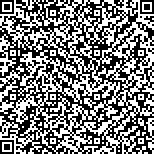宋作新,刘鑫,田地,等.基于数字化跑台的康复训练对不完全性脊髓损伤患者步行能力的影响[J].中华物理医学与康复杂志,2023,45(11):1003-1007
扫码阅读全文

|
| 基于数字化跑台的康复训练对不完全性脊髓损伤患者步行能力的影响 |
|
| |
| DOI:10.3760/cma.j.issn.0254-1424.2023.11.011 |
| 中文关键词: 不完全性脊髓损伤 单纯康复训练 基于数字化跑台的康复训练 步态参数 |
| 英文关键词: Spinal cord injury Digital treadmills Gait parameters |
| 基金项目:浙江省中医药科技计划项目(2022ZB226) |
|
| 摘要点击次数: 3400 |
| 全文下载次数: 4279 |
| 中文摘要: |
| 目的 探讨基于数字化跑台的康复训练对不完全性脊髓损伤患者步行能力的影响。 方法 选取93例不完全性脊髓损伤患者,按照随机数字表法将其分为对照组(46例)和治疗组(47例)。两组患者均给予单纯康复训练,治疗组在此基础上加用基于数字化跑台的康复训练。治疗前和治疗3个月后(治疗后),采用Lovett肌力0~5级分级测定患者的股四头肌肌力,采用10 m步行时间测试、6 min步行耐力测试及下肢运动评分(LEMS)判定患者的步行能力,采集步态参数,计算膝关节屈曲最大角度及髋关节屈曲最大角度,采用改良Barthel指数(MBI)和功能独立性评定量表(FIM)评定患者的日常生活活动能力。 结果 治疗后,两组患者股四头肌肌力、10 m步行时间、6 min步行耐力测试距离、LEMS分值、步长、步速、步频、膝关节屈曲最大角度、髋关节屈曲最大角度、MBI评分、FIM评分均较组内治疗前改善(P<0.05)。治疗组治疗后股四头肌肌力、10 m步行时间[(41.16±16.66)s]、6 min步行耐力测试距离[(43.14±12.59)m]、LEMS分值[(41.15±3.68)分]、步长[(48.85±9.44)cm]、步速[(0.45±0.03)m/s]、步频[(62.49±6.19)步/分钟]、膝关节屈曲最大角度[(67.21±6.84)°]、髋关节屈曲最大角度[(45.32±5.27)°]、MBI评分[(71.09±18.08)分]、FIM评分[(111.23±7.24)分]均较对照组改善优异(P<0.05)。 结论 在单纯康复训练基础上,加用基于数字化跑台的康复训练能有效改善不完全性脊髓损伤患者的下肢肌力、步行能力、步态参数,有利于提高日常生活能力。 |
| 英文摘要: |
| Objective To document the effectiveness of using a digital treadmill in rehabilitating the walking ability of patients with an incomplete spinal cord injury. Methods Ninety-three patients with an incomplete spinal cord injury were randomly divided into a control group (n=46) and a treatment group (n=47). Both groups received routine rehabilitation, but the treatment group was additionally trained using a digital treadmill. Before and after 3 months of the treatment, the quadriceps strength of each patient was graded using Lovett muscle strength grades. Walking ability was quantified using the 10m walk test, the 6min walking endurance test and lower extremity motor scoring (LEMS). Gait parameters were recorded along with the maximum knee flexion and hip flexion angles. Ability in the activities of daily living was assessed using the modified Barthel index (MBI) and the functional independence rating scale (FIM). Results After treatment, significant improvement was observed in the average quadriceps muscle strength, 10m walking time, 6min walking distance, LEMS score, step length, step speed, step frequency, maximum knee flexion angle, maximum hip flexion angle, MBI score and FIM score of both groups compared with before the treatment. Significantly greater improvement was observed in the treatment group′s average quadriceps muscle strength, 10m walking time, 6min walking distance, LEMS score, step length, walking speed, stride frequency, knee and hip flexion angles, and their average MBI and FIM scores. Conclusions Rehabilitation training using a digital treadmill can improve the lower limb muscle strength, walking ability and gait parameters of patients with incomplete spinal cord injury, as well as their ability in the activities of daily living. |
|
查看全文
查看/发表评论 下载PDF阅读器 |
| 关闭 |
|
|
|